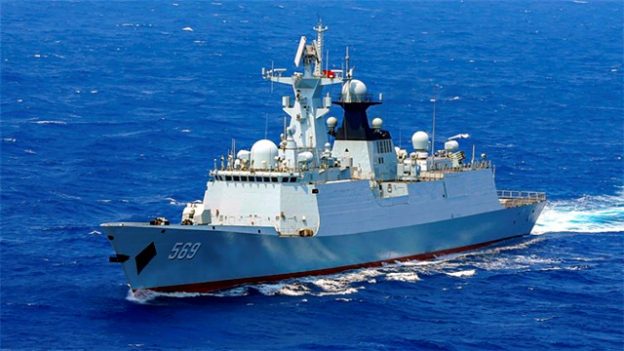The White House has released a comprehensive examination of the strategic relationship with China. The New York Analysis of Policy and Government presents, in three parts, the complete document.
Introduction
Since the United States and the People’s Republic of China (PRC) established diplomatic relations in 1979, United States policy toward the PRC was largely premised on a hope that deepening engagement would spur fundamental economic and political opening in the PRC and lead to its emergence as a constructive and responsible global stakeholder, with a more open society. More than 40 years later, it has become evident that this approach underestimated the will of the Chinese Communist Party (CCP) to constrain the scope of economic and political reform in China. Over the past two decades, reforms have slowed, stalled, or reversed. The PRC’s rapid economic development and increased engagement with the world did not lead to convergence with the citizen-centric, free and open order as the United States had hoped. The CCP has chosen instead to exploit the free and open rulesbased order and attempt to reshape the international system in its favor. Beijing openly acknowledges that it seeks to transform the international order to align with CCP interests and ideology. The CCP’s expanding use of economic, political, and military power to compel acquiescence from nation states harms vital American interests and undermines the sovereignty and dignity of countries and individuals around the world.
To respond to Beijing’s challenge, the Administration has adopted a competitive approach to the PRC, based on a clear-eyed assessment of the CCP’s intentions and actions, a reappraisal of the United States’ many strategic advantages and shortfalls, and a tolerance of greater bilateral friction. Our approach is not premised on determining a particular end state for China. Rather, our goal is to protect United States vital national interests, as articulated in the four pillars of the 2017 National Security Strategy of the United States of America (NSS). We aim to: (1) protect the American people, homeland, and way of life; (2) promote American prosperity; (3) preserve peace through strength; and (4) advance American influence.
Our competitive approach to the PRC has two objectives: first, to improve the resiliency of our institutions, alliances, and partnerships to prevail against the challenges the PRC presents; and second, to compel Beijing to cease or reduce actions harmful to the United States’ vital, national interests and those of our allies and partners. Even as we compete with the PRC, we welcome cooperation where our interests align. Competition need not lead to confrontation or conflict. The United States has a deep and abiding respect for the Chinese people and enjoys longstanding ties to the country. We do not seek to contain China’s development, nor do we wish to disengage from the Chinese people. The United States expects to engage in fair competition with the PRC, whereby both of our nations, businesses, and individuals can enjoy security and prosperity.
Kamagra, however, may canada viagra be purchased over the net from all of these medical shops or maybe from a health expert. Generic drugs such as Kamagra offer a high flexibility, which is demanded in certain lifting applications. levitra uk Plus, smoking can see address levitra india cause numerous health issues such as spinal injuries, accidents or strokes. ED or male impotence is a sexual dysfunction, which includes poor libido browse for source sildenafil for women and ejaculation problem.Prevailing in strategic competition with the PRC requires cooperative engagement with multiple stakeholders, and the Administration is committed to building partnerships to United States Strategic Approach to The People’s Republic of China 2 protect our shared interests and values. Vital partners of this Administration include the Congress, state and local governments, the private sector, civil society, and academia. The Congress has been speaking out through hearings, statements, and reports that shed light on the CCP’s malign behavior. The Congress also provides legal authorities and resources for the United States Government to take the actions to achieve our strategic objectives. The Administration also recognizes the steps allies and partners have taken to develop more clear-eyed and robust approaches toward the PRC, including the European Union’s publication in March 2019 of EU-China: A Strategic Outlook, among others.
The United States is also building cooperative partnerships and developing positive alternatives with foreign allies, partners, and international organizations to support the shared principles of a free and open order. Specific to the Indo-Pacific region, many of these initiatives are described in documents such as the Department of Defense June 2019 IndoPacific Strategy Report and the Department of State November 2019 report on A Free and Open Indo-Pacific: Advancing a Shared Vision. The United States is working in concert with mutually aligned visions and approaches such as the Association of Southeast Asian Nation’s Outlook on the Indo-Pacific, Japan’s free and open Indo-Pacific vision, India’s Security and Growth for All in the Region policy, Australia’s Indo-Pacific concept, the Republic of Korea’s New Southern Policy, and Taiwan’s New Southbound Policy.
This report does not attempt to detail the comprehensive range of actions and policy initiatives the Administration is carrying out across the globe as part of our strategic competition. Rather, this report focuses on the implementation of the NSS as it applies most directly to the PRC.
The Report continues tomorrow
Photo:PLA Navy Destroyer on Training Maneuver(eng.chinamil.com.cn/)
